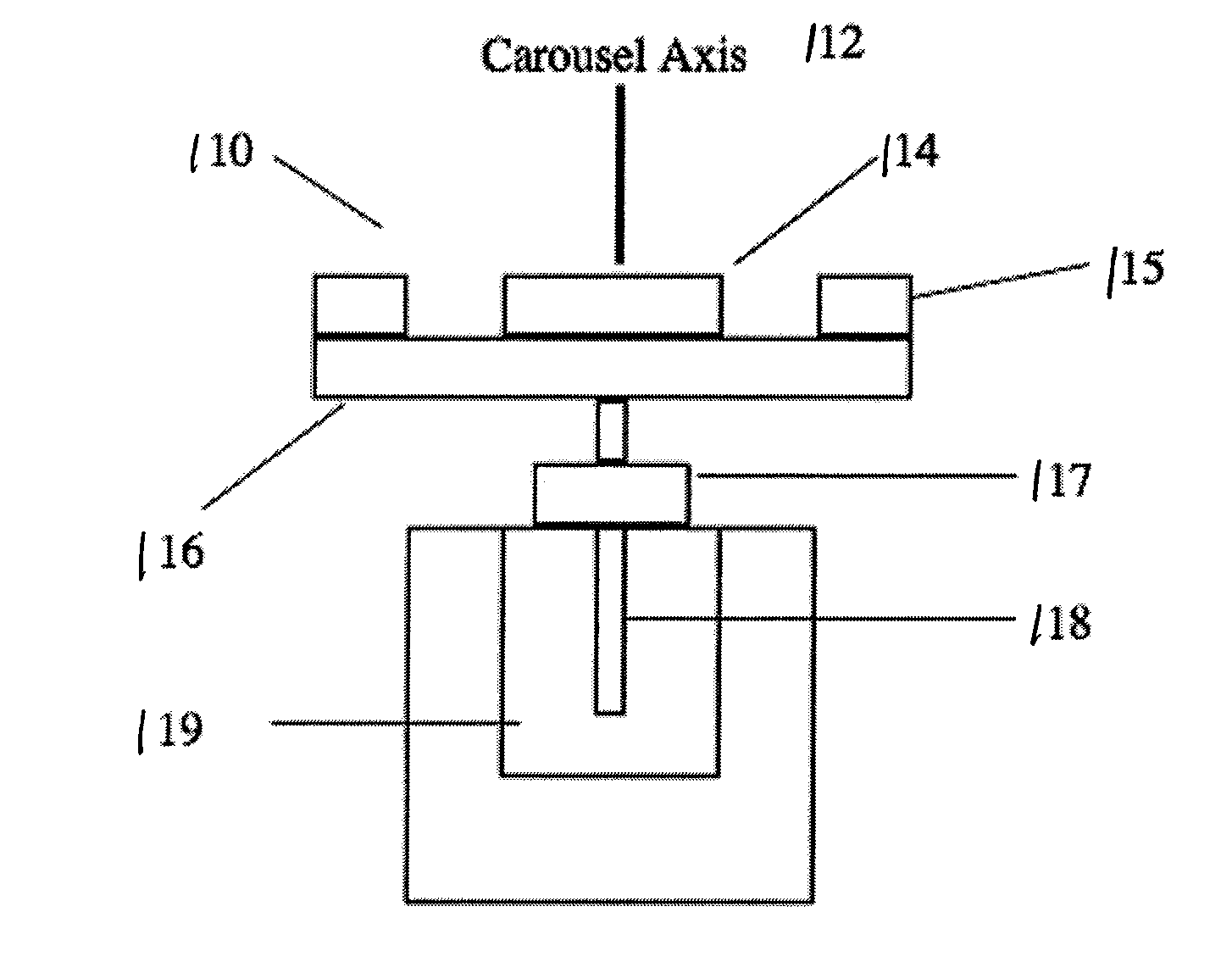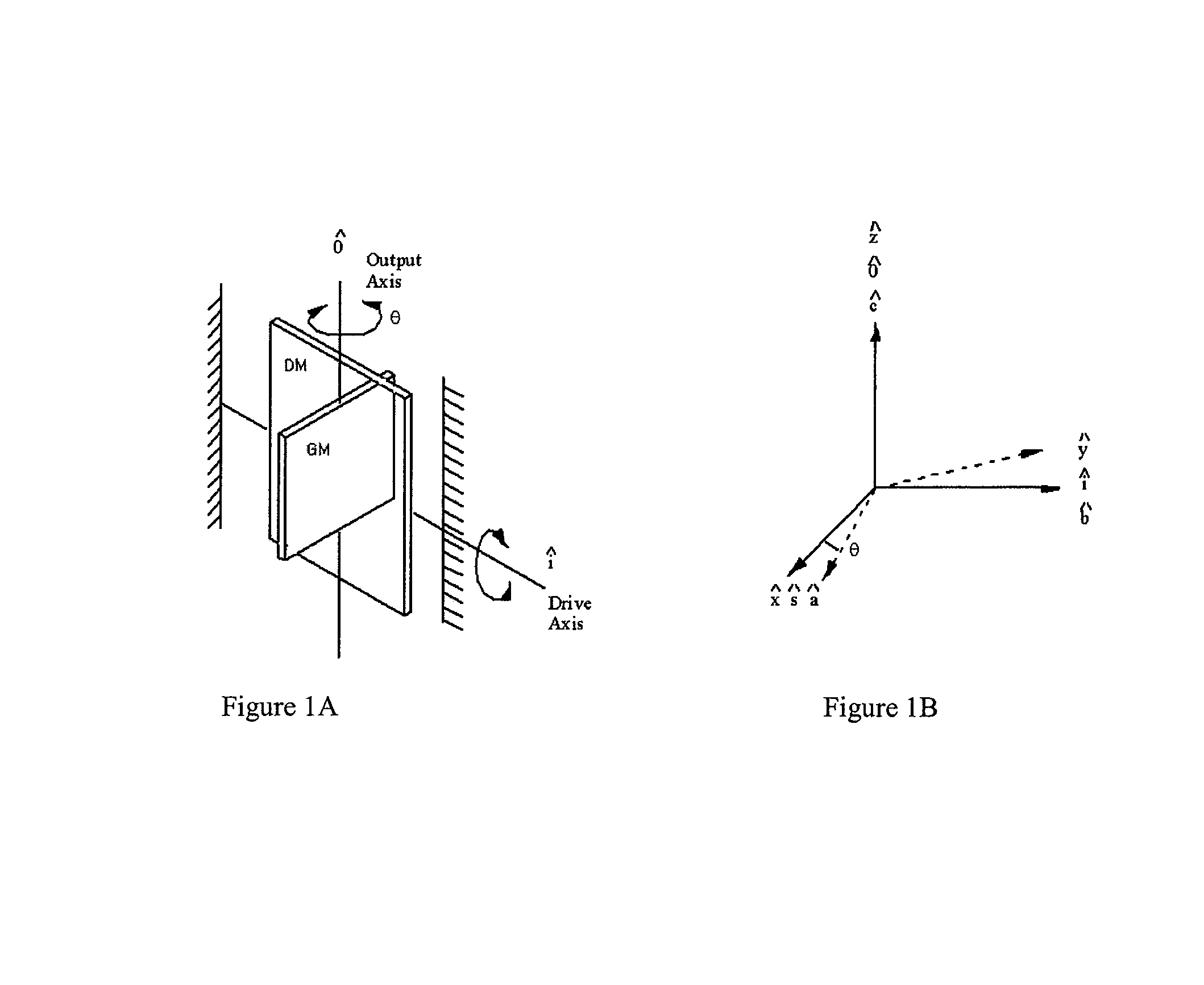Bias measurement for MEMS gyroscopes and accelerometers
a technology of accelerometer and bias measurement, which is applied in the direction of acceleration measurement using interia force, turn-sensitive devices, instruments, etc., can solve the problems of bias drift, time-consuming and expensive testing, and relatively sensitiveness of mems inertial instruments, so as to reduce the size and complexity of the imu and eliminate bias drift.
- Summary
- Abstract
- Description
- Claims
- Application Information
AI Technical Summary
Benefits of technology
Problems solved by technology
Method used
Image
Examples
Embodiment Construction
[0129]The G2-Out Gyroscope 70, FIGS. 8 and 9, is a variation on the G2-Gyroscope where the Gyro Member 80 is the structural outer member, and the Gyro Member is driven directly about the Drive Axis 84. The Output Axis is still normal to the plane. The alignments of the Drive Axis and Input Axis 85 are as specified with the G2 Gyroscope.
Mechanical Design of the G2-Out Gyroscope
[0130]The mechanical design of the G2-Out gyro embodiment of the invention is described with FIG. 8. The gyro is mounted to the Pyrex substrate 71 via the mounting post 72 in the center. Ring structure 73 is attached to central post 72 with four radial flexures 74. The radial flexures allow oscillation of the gyro about the Output Axis (normal to the plane). From the ring is attached the rotor 75 of the capacitive rotary comb sensor. The fingers of the rotor extend radially towards the center of rotation. Four radial comb stators 76, 77, 78, 79 are mounted to the Pyrex substrate. The fingers of each stator exte...
PUM
 Login to View More
Login to View More Abstract
Description
Claims
Application Information
 Login to View More
Login to View More - R&D
- Intellectual Property
- Life Sciences
- Materials
- Tech Scout
- Unparalleled Data Quality
- Higher Quality Content
- 60% Fewer Hallucinations
Browse by: Latest US Patents, China's latest patents, Technical Efficacy Thesaurus, Application Domain, Technology Topic, Popular Technical Reports.
© 2025 PatSnap. All rights reserved.Legal|Privacy policy|Modern Slavery Act Transparency Statement|Sitemap|About US| Contact US: help@patsnap.com



